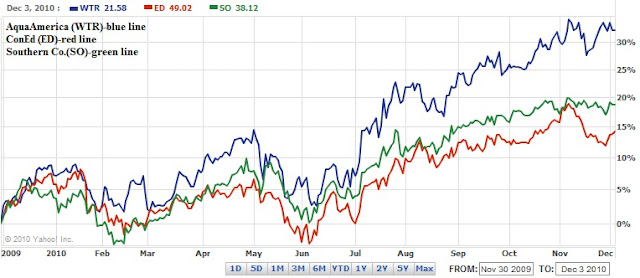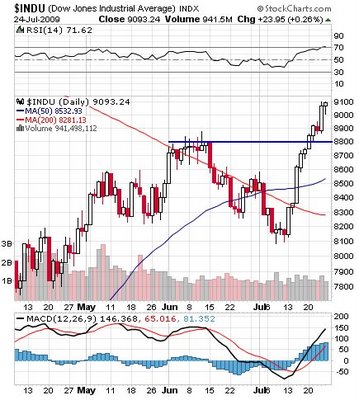On November 29, 2009, in an article titled "
What About Utilities?", we submitted our thoughts about the merits of buying the electric utility Consolidated Edison (ED). Our response was that, in terms of a company in the exact same industry group, Southern Company (SO) was probably the best peer to choose from. In addition, we indicated that, although not in the exact same industry group, AquaAmerica, Inc. (WTR) was a far superior alternative to Consolidated Edison (ED).
Below is a chart of the performance of all three stocks from November 30, 2009 to December 3, 2010. It should be noted that the chart only reflects the change in price and not the dividends paid.
As you can see, AquaAmerica, Inc. (WTR) came out on top by generating a return of 32.23% in the last year. Second in the ranking was Southern Company (SO) which returned 18.79%. Finally, Consolidated Edison (ED) returned 14.24%. If viewed strictly on a price appreciation basis, AquaAmerica exceeded the return of Consolidated Edison by more than double.
When analyzed from the more relevant basis of total return (dividend plus price appreciation), the performance was as follows:
-
WTR-36.50%
-
SO-25%
-
ED-20.32%
We invite the curious to re-read the piece we wrote (
located here) at the time to gain the “insight” that we were trying to convey. That “insight” is to always seek the best alternative. To the New Low team, the best alternative is the stock nearest the low that has the most viable upside prospects. Those that wish to suggest that “…no long-term holder of stocks would care about the one-year performance of a utility...” are correct. However, what we are trying to demonstrate is the value of assessing the proper time to buy.
Although we outlined our rationale for selecting AquaAmerica over Consolidated Edison, we’re more than willing to submit to the idea that we’re just lucky. As my economics professor used to say, “It is better to be lucky than smart.”



 The companies that are within 10% of the low offer a great opportunity to do research and consider buying.
The companies that are within 10% of the low offer a great opportunity to do research and consider buying.
